Hey all, today I'm revisiting my Fine-Tuning feature after completing the thoroughly excellent crime thriller Sleeping Dogs. Snoozy Pups has a lot going for it, but while playing I couldn't help but feel how much of its structure was purloined from other games of its type. At which point I realised how unfair it is to single out Soporific Hounds when so many of these games have been building on the GTA III model since that game first appeared and surprised the world with how much a series could improve after jumping to 3D; a process that theretofore commonly saw opposite results. It seems like the larval stage of any new game genre is being referred to as a clone of its creative progenitor, and these games have long since passed the point where they've undergone their pupal stage (why did I have to get stuck in a bug analogy?) and become their own unique butterfly. Unlike those damn Doom clones - where the hell do they get off?
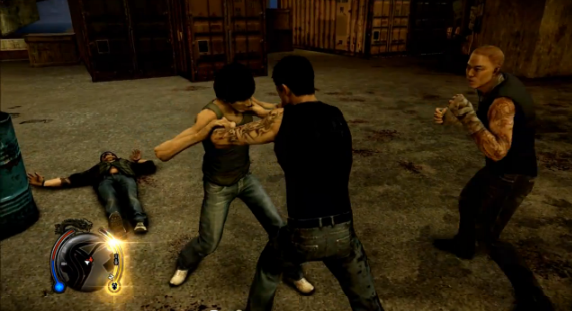
So in an effort to once again push my futile campaign to officially have sandboxes renamed toyboxes (does one really sound more disagreeably childish than the other?), at least in terms of an open-world game where every element is pre-generated and fixed, and also to honor this increasingly relevant sub-genre, I've compiled a list of what I believe are eight important pillars that define the toybox and for each of them a game that is the perfect example of what I'm talking about. Hopefully what we'll end up with is a hypothetical nonpareil of the genre (from my perspective at least) and not some kind of horrible mutant flipper baby. Though there's no reason it can't be both, I suppose.
Also, as with the previous Fine-Tuning article, I won't be going outside what has already been done before. This is largely because I feel I need some sort of limiting criteria to stop myself from going crazy-go-nuts. It certainly saves you all from long-winded descriptions of some dreamlike nonsense concept that might never pan out; instead you can just check out the games in question to determine what I'm talking about.
World
Perhaps paramount to the toybox creation process is putting together a huge world for the players to amuse themselves with. Such worlds need to be expansive, filled to the brim with cool things to look at and activities to undertake and be fascinating enough that players will want to explore every corner of it. It seems to have become de rigueur that these worlds be based on actual cities, the idea being that this helps with the verisimilitude of the story and the protagonist's plight - this being the real world and all - as well as allowing the design team to concentrate their efforts elsewhere, as creating a massive world from scratch would put quite a dent in the development time to put it mildly. Of course, an almost to-scale virtual construction of NYC isn't exactly something that could be done in a day either, but given how many games seem to use the Big Apple as a backdrop there has to be some sort of middleware out there for it these days. "SpeedManhattan", perhaps.
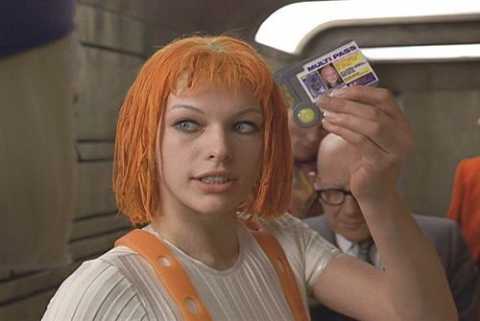
This is why my pick goes to Fifth Element. Yep, I've already broken my cardinal rule of only choosing extant toybox games from which to derive my quintessential toybox experience. Of course, the Fifth Element had a rather crappy license game when it came out, but that's not what I'm going for necessarily. Instead, I wrote a while back about vertical cities. They've been put to some really cool uses by games like Jedi Knight, Project Eden and Deus Ex: Human Revolution, but we've never had an instance (I believe) where the player had free reign to fly between destinations of their choosing in one of these dimensionally-enhanced metropolises. I think it'd be really cool to have a character that's at least somewhat immune to rapid descent, since such an incident would be common in this case, putzing around a vertical city trying to follow directions that include a Z axis. The designers would have a hell of a time coming up with a workable GPS but, hey, these are crazy dream scenarios we're dealing in here.
If anyone's wondering, I just picked Fifth Element to do the work of whatever marketing asshats that are responsible for putting multiplayer/on-disc DLC behind a pay wall for them by suggesting they call it the Multipass. You're welcome, guys. Try not to damage the sunroofs of your Benzes when you pump your fists in celebration.
Vehicles
A natural accompaniment to a large city is some way of getting around it. Walking and running are dandy and all, but it's not going to get you anywhere fast. A public transportation service of some kind that acts like a warp is definitely appreciated, but you might as well go the whole hog and have a really good driving engine in there with which to create many of the set-pieces that will be integral for the story and a large portion of the side activities. Now I can just about tolerate driving in games at the best of times (which would include driving-focused games like Burnout Paradise or Driver: San Francisco). When it's simply one of many components, it becomes something of a chore to get from A to B at best and a horrible debacle of broken pedestrians and lampposts at worst. Fortunately, my earlier decision to base the game in a vertical city mitigates most of the problems relating to collisions, if perhaps adding a whole slew of extra ones besides.
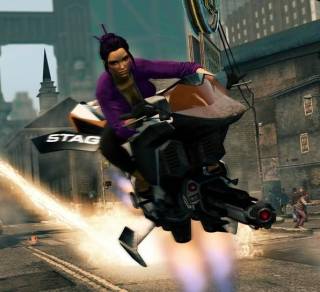
Because of this, I'm going with the hoverbikes of Jak II, though with a caveat. Those bikes had an interesting limitation in that they could only hover a few feet off the ground, adding a few more when it was necessary to leap over a barrier. So instead, I want these bikes to be as plentiful as they were in Jak's experiment in eyeshadow and death metal (and like the similar instance with the Prince, it was a phase that I was glad to see the end of) but control like the really cool S.T.A.G. Specter from Saints Row: The Third. Of course, if these bikes are commonplace methods of transportation in this hypothetical city of ours, then they can't have giant frickin' lasers on them. At least not all of them. And there's a lot of things a bike can't really do but a car can, such as holding passengers for drive-by assists or sticking some poor soul in the trunk for later mischief. So yeah, hover cars too, which I believe Jak II also had to some extent. They just won't be glued to the floor by some mysterious force (if gravity can even be called mysterious in this day and age) this time around.
Story
I'm not going to recommend we take an existing story for this part. The whole point of the story is to be unique, or at least to the acceptable level of creativity one would expect from a video game narrative, which is to say a plot that's mostly cobbled together from movies and other video games. Maybe a comic if we're lucky. Sleeping Dogs' story was a little more in-depth than most, though it sure had a lot of dead ends and GTA-style mini-arcs where you'd go work for some mid-tier gangster for a bit until the game decides it's time for you to head up in the underworld (down in the underworld?) and your previous sponsor is summarily dispatched or relegated to the sidelines. I got no beef with a game going through its story episodically, but the way these games tend to just move on to the next bunch of missions without much fanfare can often seem a little disingenuous.
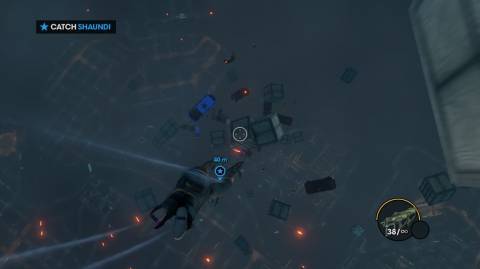
As such there's two examples I want to pull from here: Saints Row and Grim Fandango. Saints Row because I enjoy their approach to storytelling, which is to say have completely bananas shit happening constantly. If one of these games wants to present a darkly dramatic fable of betrayals, identity crises and gray moralities then that's entirely their prerogative, but it just tends to ring hollow when it relies so heavily on empathizing with a protagonist that just moments before was running over prostitutes and feeding a hoodlum through a woodchipper. I'm certainly not going to emotionally invest in some dramatic moment where a guy wonders where his moral compass is at if he just went and Carl Showalter'd someone (though through my bidding, I'll readily concede). I also think that because everything in this world I'm forming is flying around already, it's probably prudent to stay on the comical/fantastical side of things.
As for Grim Fandango, I included that because I want everyone to be "Día de los Muertos" style talking skeletons. Okay, not really (never say never though), but rather how that game expertly uses time skips between every major story arc. I suppose I could've used Assassin's Creed as an example of a game that has time skips and is actually open-world, but those tended to feel a little more arbitrary. It's a big part of why time skips in games can often be annoying; the player feels they miss a lot of the action during those hiatuses, and how it's a little weird that absolutely nothing plot-relevant happened or how the usually proactive protagonist did nothing during that time. I feel that if you provide players with a solid reason why they might suddenly lose several months, then they're more inclined to not feel alienated when it happens. With time skips that are properly broadcast, you can really start to play around with an episodic approach to story missions. Of course, I'm asking a lot of whatever imaginary scribe is putting this comedic tale of skeletons in flying cars together, but that's why they get paid the mega-pretend-bucks.
Protagonist
Yeah, that guy. Figured I should probably address him. Or, indeed, her. The protagonist is an element indelibly linked to the story; they are essentially what the story revolves around. But here's the thing: The protagonist doesn't necessarily have to be one person. I'm not just suggesting a Killer7 situation either. I've been a fan of games that allow for a whole cadre of playable characters that each have their own goals (both in the video game sense of "go here and do this" as well as the narrative sense of "this is what this character wants, this is their agenda") and their own distinct personalities and playstyles, which usually coincide if they've been particularly well-written.
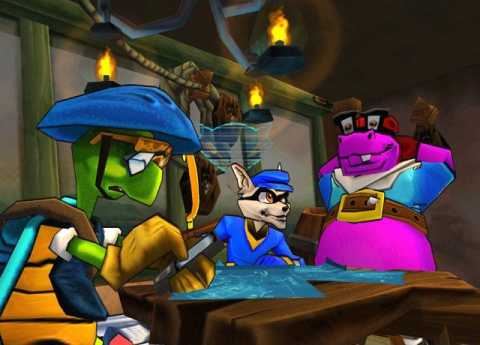
For this reason, I've elected Sly 3: Honor Among Thieves as my pick for this category. Maligned in comparison to Sly 2: Band of Thieves for its lack of focus, which in part was due to its much expanded cast list of playable characters, I actually appreciate a lot of what Sly 3 tried to do to expand on Sly 2's superb pacing and its scenario design strategy of "introduce new level with reconnaissance, set-up various stages of a major plan for later, enact major plan". Sly 3 also kind of made things way crazier, which was impressive enough when Sly 2 had you breaking out of a gothic prison/asylum led by a tyrannical spider lady warden and foiling the anti-environmental logging plans of a recently defrosted centuries-old Canadian moose. They did this by having the game focus on recruiting an "Ocean's Eleven" team of experts, including antagonists from previous games, in order to assist Sly in breaking into his own family's vault before a vindictive former teammate of his father's (and a baboon in a lab coat, lest I gloss over that) beats him to it. I loved how each of the team member's expertise would come to the fore more than once through various side-missions as well as the story and it was one of the few ways I felt Sly 3 managed to improve over its older overachieving brother. If each of the playable characters in this game had their own means of getting around a vertical city (jetpacks, grappling hooks, a natural ability to fly) then so much the better.
This is a pretty big blog so far, isn't it? Two-parter! Comics forthcoming!
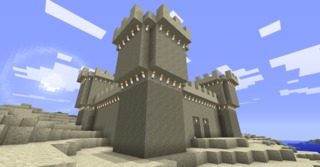
Log in to comment